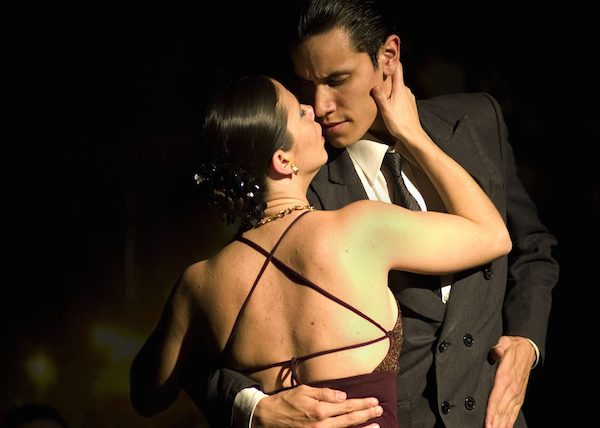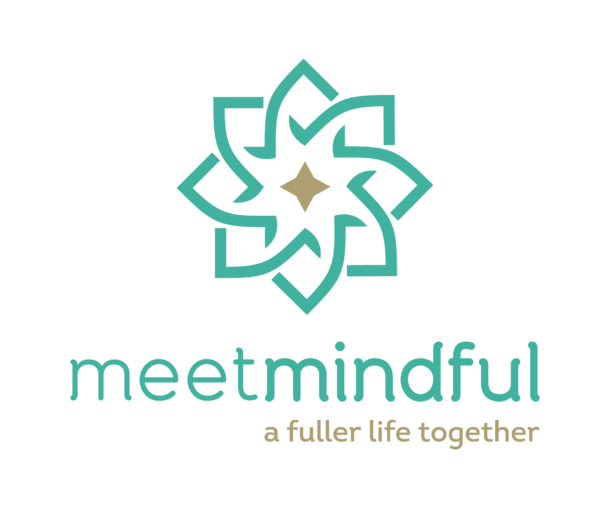The lesson that will transform your relationships forever.
Last week I sat with my friend “Sarah,” as she described how hopeless and exhausted she’s felt lately, specifically in regards to her newly-blossoming relationship with a man named “Matt.”
Sarah thinks the world of Matt—he’s charming, successful, generous and (may I say) easy on the eyes. Yet despite Matt’s attractive qualities, Sarah’s not happy and not acting like herself.
Over the past few months, I’ve seen Sarah cancel plans with friends (to spend time with Matt) and change her style of clothing. Even her personality seems different.
It took me minute to put all the pieces together, but this actually seems to be a familiar pattern for Sarah when she starts to date someone—she’s doing a dance, and a frantic one at that.
The Relationship Dance
There are several different types of relationship dances that affect the way people conduct themselves within relationships.
Some dances don’t begin at all because the person tends to sit against the wall of life to protect him/herself, usually from potential hurt.
Some dances start slow, are intimate, and involve thoughtful, well-coordinated moves—a gentle push and pull across the dance floor. These partners have chosen each other for a dynamic waltz, perhaps for a lifetime.
Other dances (like Sarah’s) could be compared to a tango. They are intense, passionate and involve a longing to dance that is so strong, so all-consuming, that all else—friends, work, self-care—disappears into the background as the person tries frantically to keep up, in hopes that they will finally prove that they are a worthy dance partner.
What trips this dancer up is that this pattern tends either to push good dancers away (healthy people don’t want to “disappear” into another person) or attract partners who will keep him/her on their toes, never quite embracing them into a slow, intimate, graceful dance. The tango is always a tango, it is never a waltz.
Origins of Dance
People learn to dance long before they know how to walk. I know that sounds backwards, but try and follow me.
You learn how to dance from the early teachers in your life, most often from parents. The way in which you see your parents interact, treat and care for each other is your very first dance lesson of many that you will receive growing up.
Think back… what dance did you see your parents doing? What did it look and feel like? How did you feel watching it?
Were they distant, disconnected or cold toward each other? Were they close, affectionate and caring toward each other? Did they repair missteps or conflict in healthy ways? Was one parent always trying to please or gain affection from the other? Was one parent aloof, inconsistently present or affectionate?
Tiny Dancer
Your second series of dance lessons came from how you learned to relate to your parents. Typically it is the opposite sexed parent, but not always.
Think back for a moment—how did you relate to your mother or father? Was his/her love freely given? Did you feel you had to be, do, and/or act “good enough,” or even perfect to gain their love, affection or approval?
Why are these feelings about your parents important to the dance you may be doing?
The answer is, the way you felt (and may still feel) about your early relationship experiences with and between your parents influence your adult relationship patterns.
How does this happen, you ask? This happens through three simple, yet complicated steps, which were outlined by attachment pioneer, John Bowlby in 1973:
1.) Parent(s) models relationship behaviors, with other parent or significant other, and with child.
2.) Child internalizes that model (i.e., sense of self as worthy of love and care, how to treat others, and perception of the world and others in general) as the model for relationships in the future.
*Attachment researcher L. Alan Sroufe (1996) revealed that without radical changes in parent-child interactions, a reparative relationship experience with another close figure (e.g., grandmother, nanny), or psychotherapy for at least six months, it is predicted that this parent-child model will influence adult relationships.
3.) Adult engages in relationships (romantic and platonic) that mimic that internalized model, thereby reinforcing the model.
Did a light bulb just go on? If so, this is a very good sign.
Changing Your Dance
Now, this isn’t about blaming your parents for your relationship problems and resigning yourself to unhealthy, toxic relationships because your parents taught you this. Although such blaming/complaining may be temporarily comforting, your relationships won’t get any better.
If you are a frantic dancer like Sarah, the first step to take is to realize you are not, in fact, “fated” to suffer in relationships. This is simply learned behavior. You learned this dance. The fact that you learned these steps means that you can unlearn them.
Powerful, right? Yes, I do believe you can change years of early learning and repeating of patterns.
The first step in this process is realizing the dance you are engaging in will never end the way you hope it will. Like Sarah, this frantic dance will never get you the love you’re worthy of and deserve—the person of your true dreams.
The truth is, the person of your former “dreams” is only a repetition of that earlier relationship model—where you felt unworthy, not good enough, always in search of approval—with someone who will only serve to reinforce those feelings. And, why would you want that?
To get the relationship you really want, you must first see your own worthiness—outside of any relationship—then make an active, conscious decision to engage in relationships where you don’t have to prove or show that worthiness.
Imagine that—being with someone who just gets you. He or she sees your wonderful, beautiful, strong self—because you see it—not because it is reflected by another person.
This is the ultimate lesson in beginning to dance differently.
References:
Bowlby, J. (1973). Attachment and loss: Vol. 2. Separation. New York: Penguin Books.
Sroufe, L.A. (1996). Emotional development: The organization of emotional life in the early years. Cambridge, UK: Cambridge University Press.
[image: via audrey_sel on flickr]











